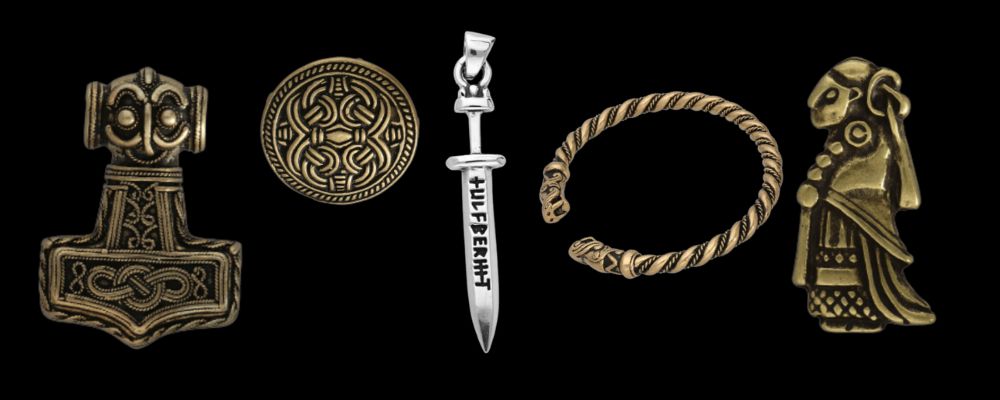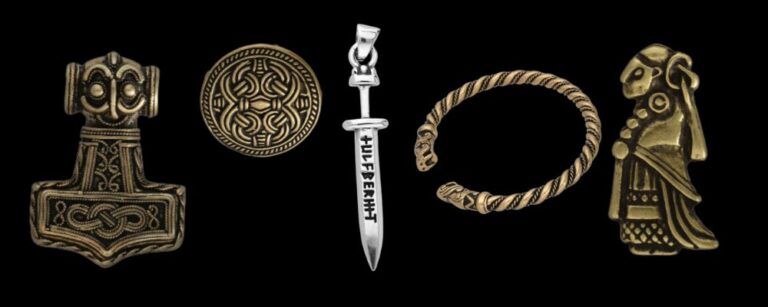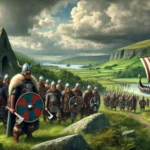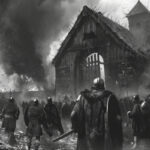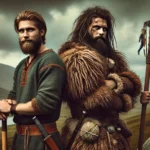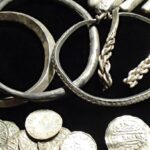Many of the pieces of jewelry in the VKNG collection are inspired by genuine Viking antiquities that were used by real Vikings almost a millennia ago. These same archaeological finds provide important information that help us to understand how the Vikings lived and what they believed in.
Today we decided to pay homage to some of the important Viking treasures that we refer to in every aspect of our work. Below is a list of ten of our favorite treasures surviving from the Viking world.
1. Mjolnir Pendants
Mjolnir pendants are the most common type of jewelry to survive from the Viking world. Around 200 survive today. Thor’s Hammer is believed to have been worn as a symbol of protection since the god was charged with protecting Asgard and Midgard from the giants with his hammer.
Mjolnir is also one of the few Viking symbols that continued to be common in the Christian age. This fuels the idea that the hammer was worn as a symbol of continued allegiance to the old religion, just like the cross was worn as a symbol of Christianity.
Many fine examples survive. Probably the most important example comes from the Danish Island of Lolland, because it has a runic inscription that says “this is a hammer”, confirming the interpretation of these finds as hammers.
One of the most spectacular examples comes from Odeshog in Sweden and is made in gold and silver. The hammer head has a knotwork design of interlocking loops, while the handle of the hammer looks like a warrior’s helmet of a raven’s head, either of which would be a reference to Odin.
Another fine example in gold-plated silver comes from Bredsattra in Sweden and is decorated with extensive knotwork and what looks like a raven’s head on the handle. An unmistakable raven’s head design is also evident on the pendant surviving from Skane in Sweden in silver with filigree ornamentation, and from Mandemark in Denmark.

2. Valkyrie from Harby
The Valkyrie is a small silver gilt three-dimensional figure from the early 9th century found at Harby in Denmark. She is clearly female and also a warrior, which is why she has been dubbed the Valkyrie. But she could be a Norse goddess or a rare example of a Viking shieldmaiden.
While this is the only surviving three-dimensional figure of this style, several similar figures depicting “Valkyries” survive from the Viking world.
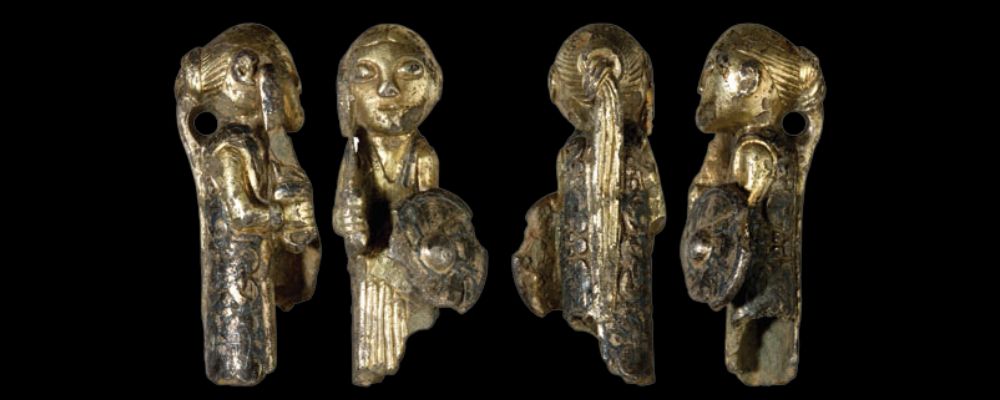
3. Vale of York Hoard
Often Viking treasures are found in collections, called hoards, buried in the ground. The Romans buried hoards as a way of hiding treasure during times of risk, with the intention of returning later for their wealth. It is suspected that the Vikings buried hoards as offerings to the gods, believing that items placed underground or in water would be found by the gods. Whatever their purpose, hoards have produced some of the most impressive Viking finds.
This particular hoard, which dates to the 9th or 10th century, was found near the English town of Harrogate in 2007 by amateur treasure hunters. The hoard includes more than 600 coins, bullion, and assorted jewelry, almost all in fine silver. The items were placed in a silver container etched with lions and deer and lined with gold.
The coins show us that these objects were collected from around the known world, including Afghanistan, North Africa, and Russia, reflecting the Viking culture of exploration and trade.
Among the finest pieces in the hoard is a gold arm ring, rare to be included in a silver hoard. It is decorated with a repeating geometric pattern, a common design style in the Viking age. It reflects why the Vikings were known as “ring givers”. Chiefs often gave their warriors arm rings as a sign of favor, which were then worn as a sign of loyalty.
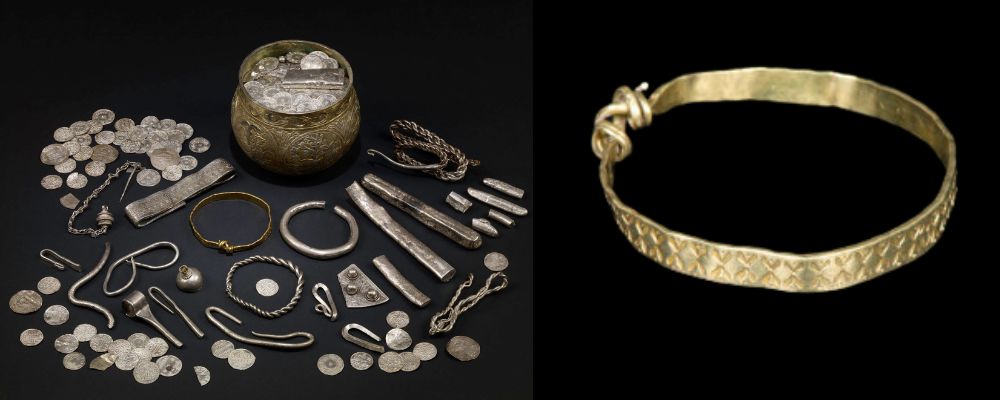
4. Spillings Hoard
While the Vale of York hoard is considered large, it pales in comparison to the Spilling Hoard, found in northern Gotland in Sweden in 1999. It is composed of 67 kilograms of silver, including 14,295 coins, mostly Islamic, and 20 kilograms of bronze. Rather than being a dedication, this does seem to have been a hidden hoard, as it was found under a Viking outhouse dating to the 9th century.
While the collection is not artistically notable, the sheer number of artifacts is significant. One interesting find is an Islamic coin from the Turkish Khazar Kingdom from around 800. It is engraved with the inscription “Moses is the messenger of God”, rather than the usual Muslim text “Muhammad is the messenger of God”. It has become known as the Moses coin.
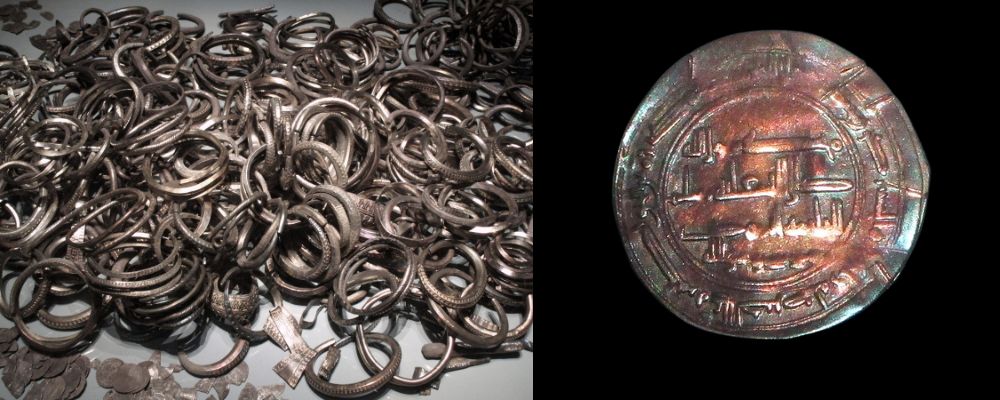
5. Hunterston Brooch
Cultural exchange was inevitable between the Vikings and their neighbors, and this is well represented by the Hunterston Brooch, found in Scotland and dating to the early 8th century. The brooch, made in gilt silver with amber decorative elements, shows a mixture of Celtic and Viking styles.
A Christian cross sits at the center of the buckle design, surrounded by bird heads, a common theme in Norse art. The brooch also features serpent designs with the body of the animals twisting around itself to create elaborate patterns. A hammer symbol intersects with the tail of the serpent. This must be Thor’s hammer Mjolnir, and the serpent must be Jormungandr, the mighty sea serpent with whom Thor will fight to the death at Ragnarok.. The brooch also bears an inscription in Old Norse runes reading “Melbrigda owns this brooch”. The name Melbrigda means “devotee of Bridgit”, a clearly Celtic name.
As well as being one of the finest brooches recovered from the Norse-Celtic world, it is also one of the oldest. Brooches were a common piece of clothing in the Viking world.

6. Ulfberht Sword
This is not just one artifact, but rather an advanced sword design that was common in the Viking world from the 9th to the 11th centuries. Around 170 ancient examples of the sword survive today, all with a long, double-edged blade and straight crossbar.
But two things make these swords special. First, they are made from a highly pure and light steel alloy that requires great skill and an extremely hot furnace to work, representing a significant technological advance. The furnace required is called a crucible, which is why the resulting alloy is called crucible steel.
The second thing is that the majority of these swords, despite being forged by different blacksmiths, were manufactured with the lettering ULFBERHT on the blade, in an early type of trademark. It is notable that some have spelling errors.
Most surviving Ulfberht swords have been found as grave goods and valuable weapons that a warrior might need in the afterlife. But the pragmatic Vikings often bent the blade of the sword before burial, to discourage grave robbers from stealing valuable weapons.
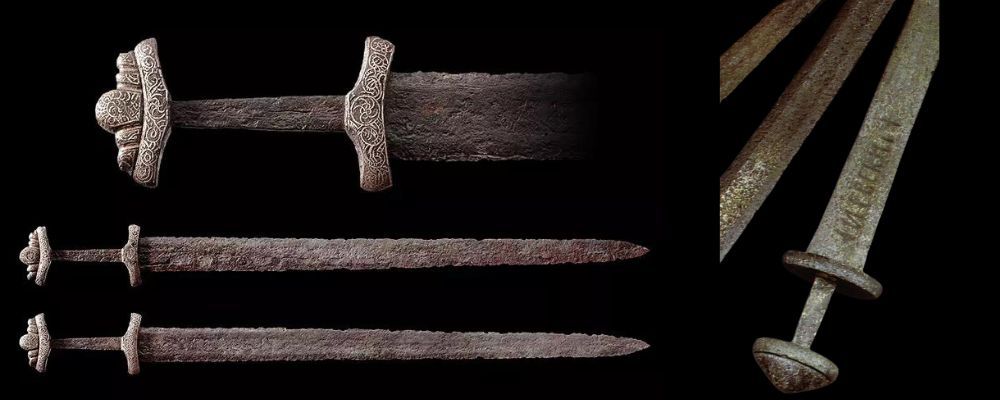
7. Precious Axe Heads
A number of decorative axe heads inlaid with precious metals survive from the Viking world. These were probably trophies hung on long hall walls rather than items carried into battle.
One example is currently in the Metropolitan Museum in New York. It is thought to date to the 11th or 12th century and is decorated with scrollwork in inlaid silver wire. The scrollwork creates a symbol that looks like Thor’s hammer, and the warrior/raven head of Odin.Another fine example is in the National Museum of Denmark, also made from iron with inlaid silver. It is decorated with swirling geometric designs in the Mammen style, which dates the axe to the 10th century. One side shows a tree motif, which probably represents the world tree Yggdrasil. The other side shows an animal figure thought to be a rooster, which may be the rooster Gullinkambi who will herald the arrival of Ragnarok.
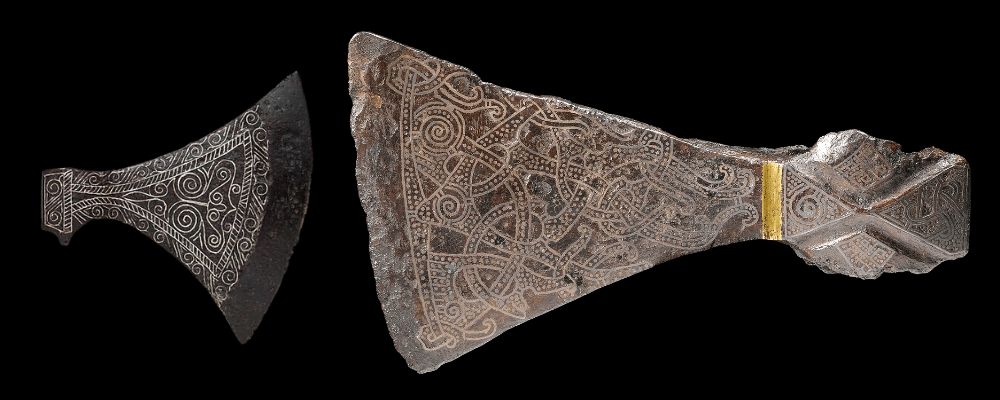
8. Oseberg Heads
The ship burial discovered at Oseberg in Norway has provided many important archaeological finds. Interestingly, the ship burial seems to hold the bodies of two women, one of whom was very high status and may have been a Volva, a Viking witch!
But among the most spectacular pieces provided by the burial are five carved animal heads of unknown purpose. The heads were carved from single pieces of naturally curved wood. Details were etched with baroque swirls and bejeweled knots, creating further animal images on the “skin” of what appears to be a serpent’s head.
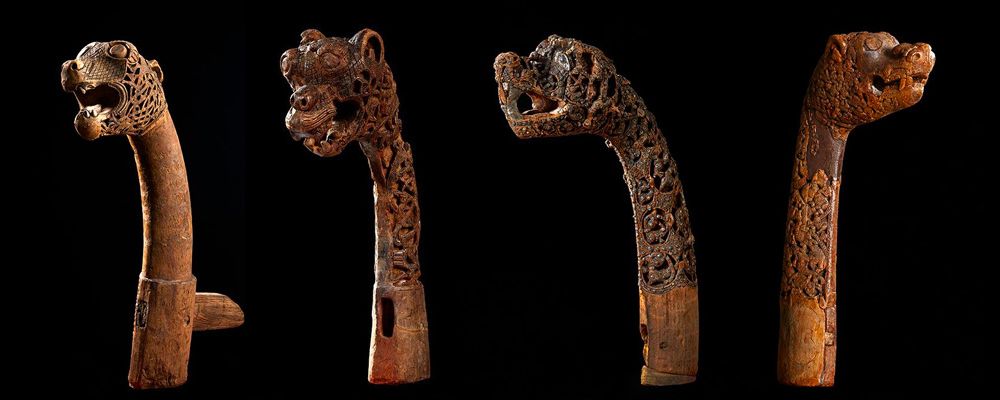
9. Lewis Chess Pieces
Who knew that chess had such a long history? The Lewis Chess Pieces were found at Uig on the Isle of Lewis in Scotland and date from the 12th century. Made from whale teeth and walrus ivory, there are 93 carved pieces, each around 10 centimeters in height. They are thought to have been imported from Trondheim in Norway.
The pieces are speculated to have belonged to a trader since there are enough pieces for four separate sets, and they do not appear to have been made by the same artist. The trader would have been selling to Viking nobles known to have played a game similar to modern chess.
As well as demonstrating Viking armor and weaponry, some pieces, which appear to be rooks, show warriors gnawing on their own shields. These are believed to represent Berserker warriors, who communed with the spirit of the bear before going into battle to embody their ferociousness. They would gnaw their shields to contain their energy until the right moment.
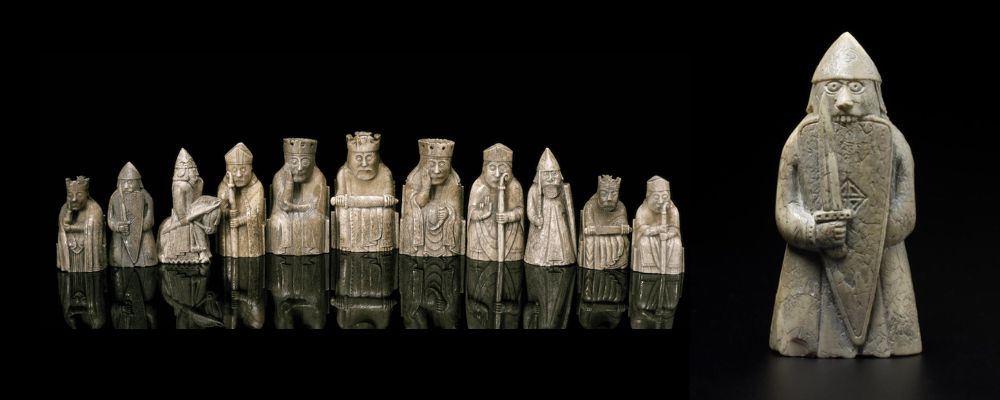
10. Overhogdal Tapestries
This is a set of Swedish tapestries that dates to 1040-1170 and contain one of the few Viking-era depictions of Yggdrasil, the world tree. While the tapestries contain a lot of information, two sections have gained the most attention.
The first section shows a room with several people standing inside with what seems like poles projecting up from the roof and a crude runic inscription below that reads “gudby”. Next to this is a hexagonal room with a figure lying on the floor. It is surrounded by what appears to be bindings or serpents.
The second part of this imagery has been interpreted as Loki, bound by the entrails of his own son and with a venomous snake hanging over his head. He has been placed here for his role in the death of Balder. He will only escape this prison at Ragnarok, when he will lead the war against the gods.
The runic inscription under the neighboring image probably means “dwelling of the gods”, so this must be Asgard. Perhaps this is the gods inside one of their halls deciding what to do about Loki.
The second section is close to the tree design at the center of the tapestry, which must be Yggdrasil. What appears to be a bird of prey sits atop the tree, and is surely meant to be the eagle that lives at the top of Yggdrasil. Several stags are also close to the tree, and according to Norse mythology, four stags lived in the tree.
Underneath the tree, there is an eight-legged figure. This is clearly Sleipnir, the eight-legged horse of Odin. He was one of the few beings that could move between the different realms of the cosmos, and in particular pass to the lower realms.
Sleipnir is followed by a procession of figures approaching a rectangular object. This has been interpreted as Odin and his entourage descending to the Well of Mimir when he receives news of Ragnarok to receive Mimir’s counsel.
Above the tree, there is a beast with visibly wide open jaws. This has been interpreted as Fenrir, the mighty wolf destined to devour Odin at Ragnarok.
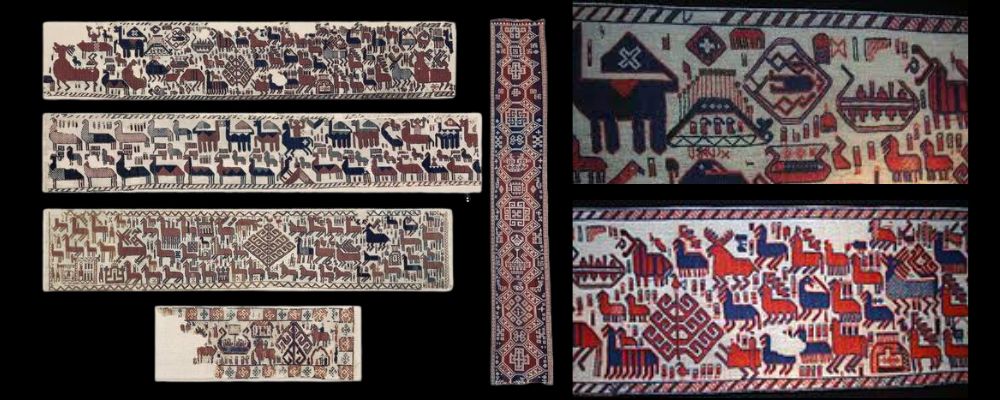
Looking for Replicas?
Do you love these treasures from the Viking world? Would you love replica Viking jewelry or modern Norse pieces inspired by these artifacts? Check out the historical replicas in the VKNG collection.
